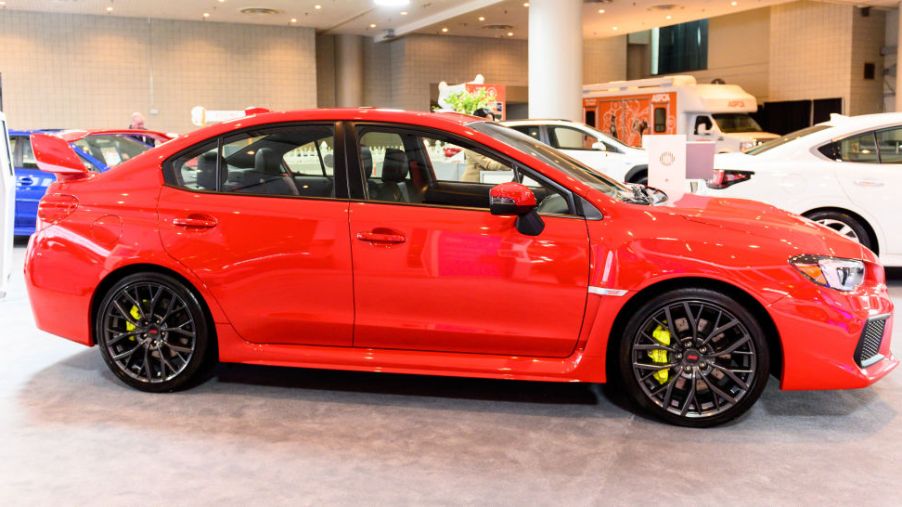
What are the Differences Between the Subaru WRX and WRX STI?
Originally produced for Japanese rally competition, the Subaru WRX was introduced in Asian markets during the ’90s, and came to North America in 2002. From its beginning, the WRX developed a cult-like following, resulting in Subaru releasing an STI model only two years later. Some very distinct differences define the STI, and it is important for anyone who is considering a Subaru WRX to understand them. We’ll take a look at the various features of each model below.
Definitions
When determining the differences between the WRX and STI, it can be helpful to know what each term means. According to Subaru Blog, WRX stands for “World Rally eXperimental”. The name apparently arose from a collaboration between Subaru and the British racing team that was instrumental in its development.
STI stands for “Subaru Tecnica International”. It refers to a Fuji Heavy Industry division of motorsports, and is therefore designed to be a higher performance Subaru WRX.
Similarities between the standard WRX and WRX STI
Both vehicles use the same chassis. Accordingly, this means that the WRX, as well as the WRX STI, will have similar bodies and interior design. Each model offers 12.0 cubic feet of trunk space, along with seating for five passengers.
The two are also very similar when it comes to safety features and ratings. However, the top two WRX trim models come with some available features that could make them safer than even the STI.
Engine differences
As noted by Auto Gravity, the primary difference between the two is driving experience. They note that “…the STI has more of everything. It goes faster, corners flatter, and brakes harder.” In addition, they report that “The STI also includes the driver-controlled center differential.” This results in quicker steering and better acceleration.
The reason for the difference in performance is due to the advanced engine in the STI. On the standard WRX, you’ll find a 2.0 liter, direct-injected turbocharged four-cylinder engine. That motor is capable of up to 268 hp. and as much as 250 lb.-ft. of torque.
The STI, on the other hand, contains a 2.5-liter, turbocharged, direct-injected four-cylinder motor that is rated for 310 hp. and up to 290 lb.-ft. of torque.
Transmission
Another factor that contributes to driver experience is the transmission. The Subaru WRX offers a six-speed manual transmission, along with all-wheel drive capabilities. On the STI, you’ll find a close-ratio six-speed transmission. That transmission includes limited-slip differentials on the rear and front, which allows wheels on both sides to better receive power.
Features
The base WRX model includes a 6.5-inch touchscreen that can be used with both Android Auto and Apple CarPlay. You’ll have to upgrade to a Premium or Limited trim to take advantage of a 7.0-inch touchscreen, which is something that comes standard on even the base model STI.
All STI models come with a Harman Kardon audio system, which contains nine speakers and a 440-watt amplifier. This audio system is only an option for those choosing the WRX Limited trim model.
The WRX STI is more expensive
Auto Gravity notes that the Subaru WRX STI is “clearly the better performer.” However, they also note that the additional performance can increase the purchase price by several thousand dollars. So the decision will actually come down to the amount of money you want to spend and how willing you are to pay for better performance.
According to Auto Gravity “the base WRX is an excellent performance car at a great price.” If you want something a little more luxurious what the base WRX offers, they suggest upgrading to a higher trim model.
However, if performance and driving experience is more important, you may want to go ahead and buy an STI instead.


